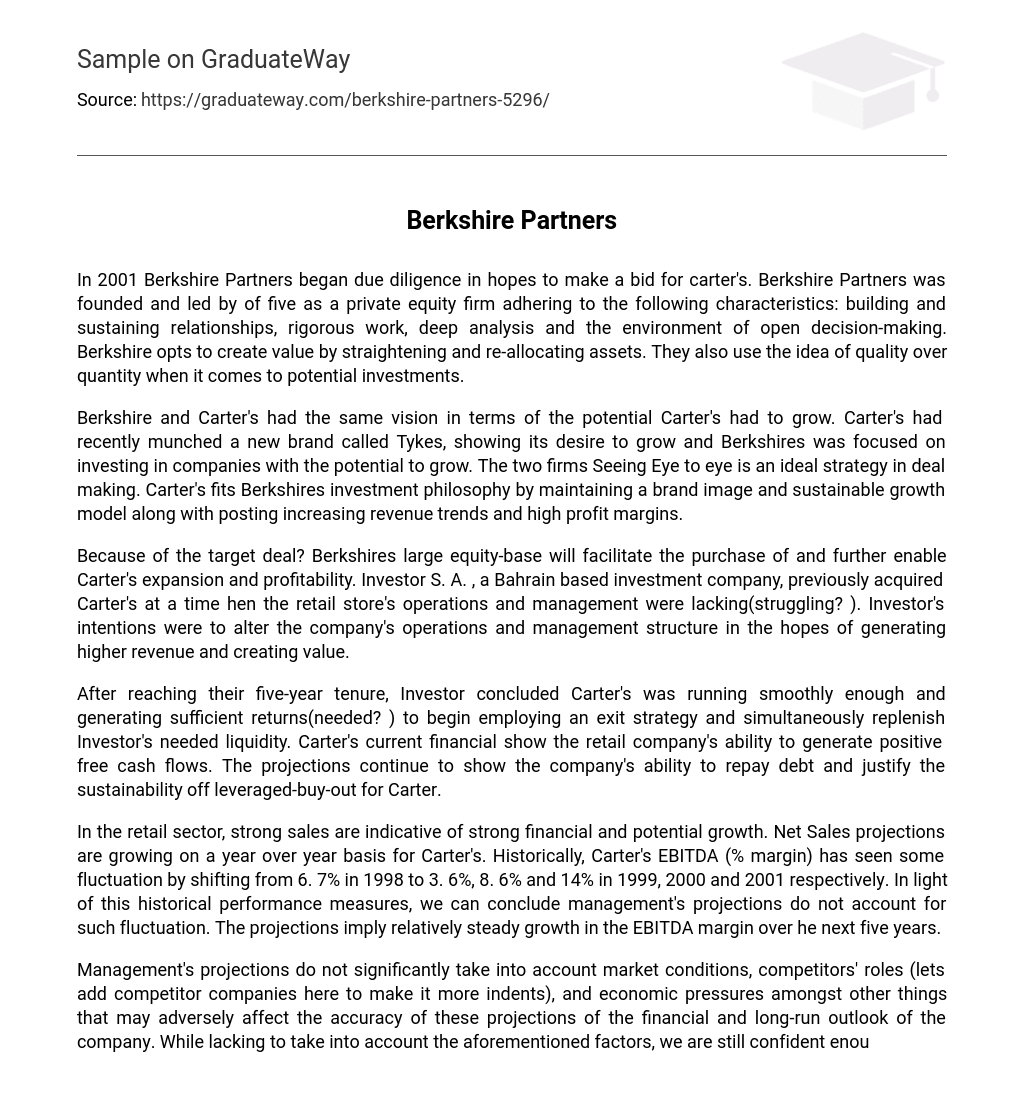In 2001 Berkshire Partners began due diligence in hopes to make a bid for carter’s. Berkshire Partners was founded and led by of five as a private equity firm adhering to the following characteristics: building and sustaining relationships, rigorous work, deep analysis and the environment of open decision-making. Berkshire opts to create value by straightening and re-allocating assets. They also use the idea of quality over quantity when it comes to potential investments.
Berkshire and Carter’s had the same vision in terms of the potential Carter’s had to grow. Carter’s had recently munched a new brand called Tykes, showing its desire to grow and Berkshires was focused on investing in companies with the potential to grow. The two firms Seeing Eye to eye is an ideal strategy in deal making. Carter’s fits Berkshires investment philosophy by maintaining a brand image and sustainable growth model along with posting increasing revenue trends and high profit margins.
Because of the target deal? Berkshires large equity-base will facilitate the purchase of and further enable Carter’s expansion and profitability. Investor S. A. , a Bahrain based investment company, previously acquired Carter’s at a time hen the retail store’s operations and management were lacking(struggling? ). Investor’s intentions were to alter the company’s operations and management structure in the hopes of generating higher revenue and creating value.
After reaching their five-year tenure, Investor concluded Carter’s was running smoothly enough and generating sufficient returns(needed? ) to begin employing an exit strategy and simultaneously replenish Investor’s needed liquidity. Carter’s current financial show the retail company’s ability to generate positive free cash flows. The projections continue to show the company’s ability to repay debt and justify the sustainability off leveraged-buy-out for Carter.
In the retail sector, strong sales are indicative of strong financial and potential growth. Net Sales projections are growing on a year over year basis for Carter’s. Historically, Carter’s EBITDA (% margin) has seen some fluctuation by shifting from 6. 7% in 1998 to 3. 6%, 8. 6% and 14% in 1999, 2000 and 2001 respectively. In light of this historical performance measures, we can conclude management’s projections do not account for such fluctuation. The projections imply relatively steady growth in the EBITDA margin over he next five years.
Management’s projections do not significantly take into account market conditions, competitors’ roles (lets add competitor companies here to make it more indents), and economic pressures amongst other things that may adversely affect the accuracy of these projections of the financial and long-run outlook of the company. While lacking to take into account the aforementioned factors, we are still confident enough in Carter’s overall positive growth indicators to Justify management’s projections and use them as a basis for Carter’s valuation.





